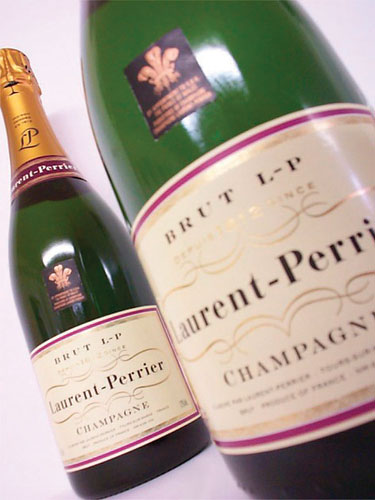.jpg)
In the early days of 1904, British and French diplomats signed a series of treaties known as the Entente Cordiale. The treaties, the result of years of negations, were meant to bring those two countries—with a centuries-long history of enmity—together into a lasting friendship. It worked. Britain and France became, and have remained, the closest of allies. Yet, today, nearly 11 decades later, and despite the best efforts of diplomats, a few old disputes seem linger. One of the oldest and bitterest of these disputes always seems to rear its head this time of year: that age-old disagreement as to how best to enjoy champagne.
The French like their champagne young and fresh, whereas the British prefer to drink it old. The French believe that champagne is a truly versatile wine which can be a great accompaniment to virtually any dish, whereas the Brits generally think that champagne is best when served without any food. The French like to drink champagne morning, noon and night, as often as they can afford it, whereas the British prefer to save champagne for special occasions, or as English novelist Evelyn Waugh once put it, champagne “is a wine for (frequent) occasional use.”
The one point both the British and French do agree on is that champagne is a truly splendid wine. And they are right.
While the chalky soil of the Champagne region in northern France indisputably produces the world’s best sparkling wines, the champagne wine-making formula has been copied frequently, and good or even great champagne-like wines are now available from all over the world. Some of them are even kosher.
Since the end of December is the most popular time for drinking sparkling wine, I decided it would be a good time to review the current crop of kosher bubblies. I was pleasantly surprised to find that all of the wines I tasted were good, and a few were even excellent.
Not surprisingly, the best wines in the tasting were from the Champagne region. My favorite (and, alas, the most expensive wine in the tasting) was Laurent Perrier’s Brut L-P Champagne. This dark-straw colored sparkler, with its rich mousse of tiny bubbles, has a rich mineral content and a luxurious mouth feel. Look for flavors and aromas of apples, apricots, heather, and toasted challah, with a delightful hint of crème brûlée on the finish. Score A/A ($79.99—available at Queen Anne Wine & Spirit Emporium, 247 DeGraw Avenue, Teaneck, [201] 692-1555).
Also excellent is Drappier’s Brut Carte d’Or Champagne. It is a dry, straw-colored cuvée which has an abundance of large, nose-tickling bubbles and that classic champagne profile: Endowed with a crisp—almost bracing—acidity, this champagne has a fruity bouquet of apples and quince. Look for flavors of apples and quince on the front of the palate, moving toward notes of grapefruit, gooseberries and toast on the finish. Score A/A ($60.00.—available at FillerUp Kosher Wines, 174 West Englewood Ave, Teaneck, [201] 862-1700).
Those seeking bubbly on a budget should try the Bartenura Prosecco. Dry and refreshing, with a vigorous mousse, this straw-colored Italian sparkler has flavors and aromas of apples and peaches, hints of kiwifruit and spice, and a nice creamy yeastiness. Score B+ ($14.99—available at Queen Anne Wine & Spirit Emporium, 247 DeGraw Avenue, Teaneck, [201] 692-1555).
Another good budget choice is Elvi’s Cava Brut, a light, elegant Spanish sparkling wine, which has flavors and aromas of peaches and pears. Look for a hint of spice on the finish, and a light-but-still-pleasant mousse of tiny bubbles. Score B+ ($21.99—available at Wine Country, 89 New Bridge Rd, Bergenfield, [201] 385-0106).
Finally, those who have a very British approach to drinking sparkling wines should consider Hagafen’s 2007 Napa Valley Late Disgorge Brut Cuvée. Ernie Weir, the winemaker behind Hagafen Cellars, got his winemaking start at Domaine Chandon, the California branch of the noted Champagne house of Moet et Chandon, where he clearly learned how to make a good Champagne-style sparkler. Nearing the end of its life, the 2007 Late Disgorge Brut Cuvée remains a charming wine: With a peach color, a satiny mouth feel and a light mousse of tiny bubbles, this six year old bubbly has flavors and aromas of apples, apricots, cream, chalk and hay, with a note of spice. Look for a hint of fresh figs on the finish. Drink within the next six months. Score A-/B+ ($47.00—available at FillerUp Kosher Wines, 174 West Englewood Ave, Teaneck, [201] 862-1700).
Whether planning to spend $15 or $150 on a bottle of bubbly, there are a few points that one should keep in mind. First, most non-vintage sparkling wines have a shelf life of about three to five years (unless of course you are very British). So when buying a non-vintage wine, avoid selecting bottles that look like they have been sitting on the shelf of the wine shop for years. Also, if you ever open a bottle of bubbly that is not quite to your liking, consider using that bottle to make Champagne Cocktails. Put a sugar cube and a few dashes of Angostura Aromatic Bitters (available at almost any supermarket) in the bottom of a Champagne flute, let the glass sit for a few minutes, and then fill with sparkling wine. The sugar and bitters add delightful flavors and can mask many of the flaws that may be found in sparkling wines.
And as for that age-old disagreement between the French and the British, well, as the French would say, vive la différence!
Wines are scored on an ‘A’-‘F’ scale where ‘A’ is excellent, ‘B’ is good, ‘C’ is flawed, ‘D’ is very flawed, and ‘F’ is undrinkable. Prices listed reflect the price at the retailer mentioned.
By Gamliel Kronemer










